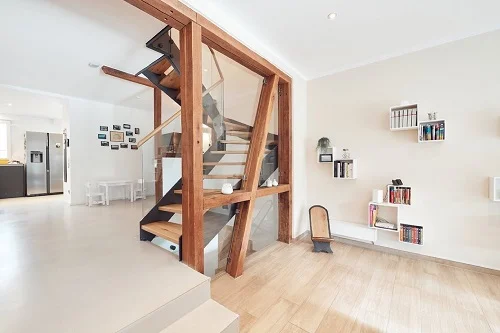How Do I Switch Off My Water Mains Safely?
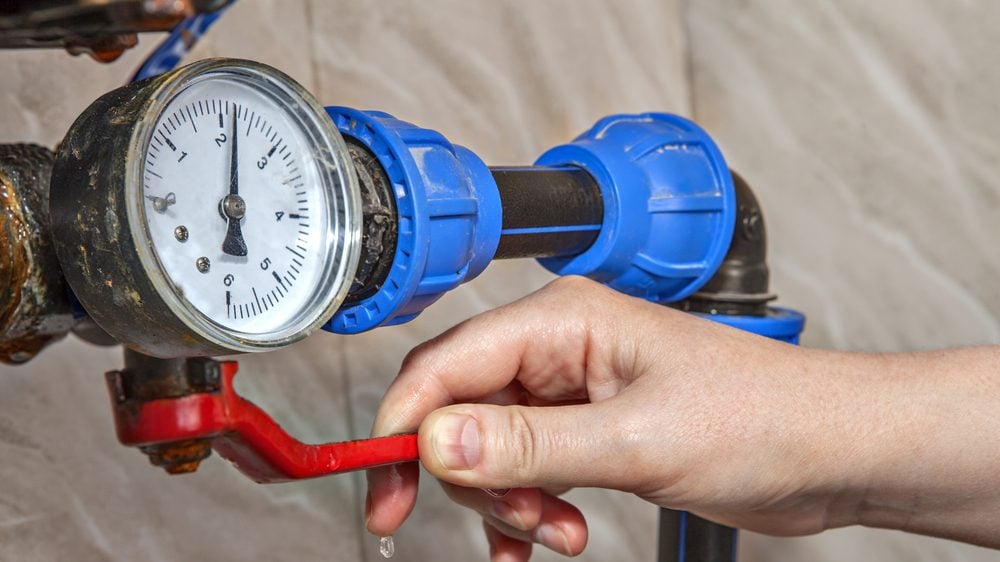
Table of Contents
Knowing how to safely switch off your water mains is crucial to preventing significant water damage in emergency situations. This knowledge can help you react swiftly and confidently when facing problems such as burst pipes or major leaks. It’s not a complex process, but it requires some understanding and cautiousness.
Always start by locating your water main. It’s typically found near the boundary of your property, often in a box or covered area. For those in buildings, it is commonly found in utility rooms or basements. Each setup can differ, but look for a large valve or switch, often wheel-like in design. If you are unsure, local utility companies can assist. Remember, turning the wrong valve could trigger other issues.
Once you’ve located the water mains switch, turning it off simply involves turning the valve clockwise until it can’t move anymore. This process of ‘righty tighty’ is nearly universal. It may be stiff due to underuse, so use a wrench or pliers if necessary. As a precautionary measure, verify the water supply is truly off by testing a tap.
To learn more about this process, gain additional insights, and familiarize yourself with the various types of valves you might encounter, visit this solid advice from Dan. Always ensure safety and immediate response in emergencies by understanding your home better.
Identifying the Water Mains
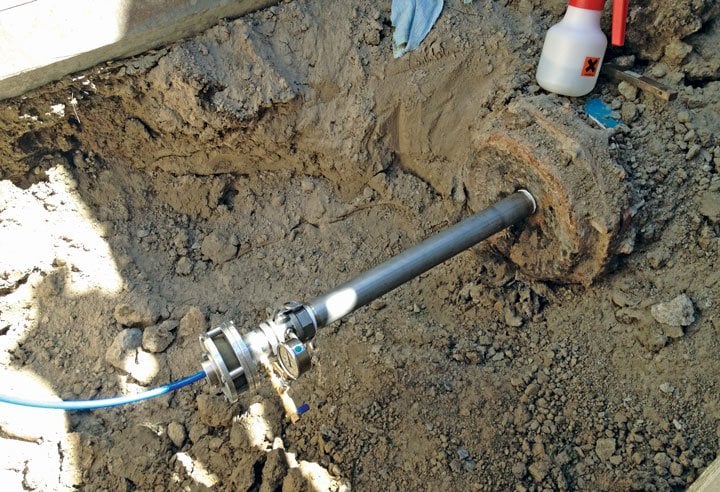 Your home’s water mains is typically located in the basement or on an exterior wall in a utility area of the house. Identify the valved section; this is the water mains shutoff.
Your home’s water mains is typically located in the basement or on an exterior wall in a utility area of the house. Identify the valved section; this is the water mains shutoff.
The shutoff is usually a red or blue wheel with a sturdy handle. It might also be white if it’s made from PVC.
Locating Underground Water Mains
If you live in a warmer climate, your water mains may be outside, possibly buried. Outside water mains are usually protected within valve boxes to avoid damage.
You can often find this box near your curb line or at the boundary of your property. It typically has a round or rectangular metal or plastic cover marked “Water” or “Water Meter”.
Check for Leaks Regularly
Household leaks are an unnecessary waste of water. The average household’s leaks can account for nearly 10,000 gallons (around 37,854 liters) of wasted water annually.
Regularly inspecting your home for visible and hidden leaks is crucial. By doing this, you not only save water but also decrease your monthly water bills.
Call Professionals if Necessary
If you’re having difficulty locating your water mains or suspect that there may be serious leakage somewhere, don’t hesitate to call professionals.
An experienced plumber can locate the main and provide solutions if there are any serious issues such as leaks or rusty valves which need to be replaced.
Finding Your Main Valve
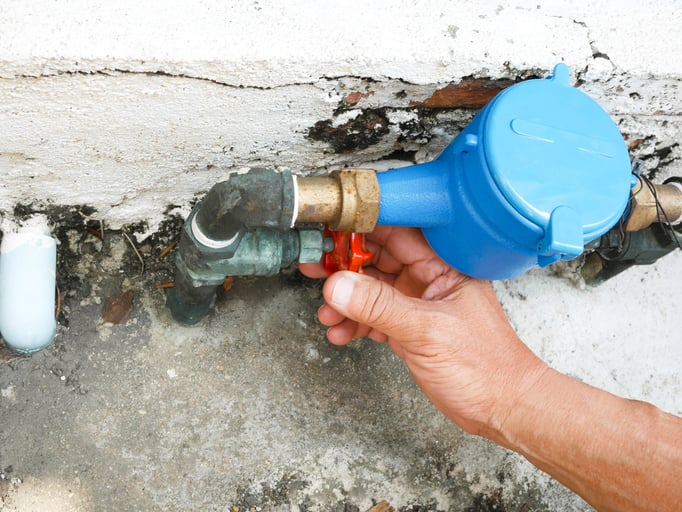 In the event of a water-related emergency, it’s critical to know how to access and switch off your property’s main water supply valve. Not only is this knowledge essential for preventing substantial damage, but it can also lead to significant cost savings. Let’s take a look at locating your home’s main valve.
In the event of a water-related emergency, it’s critical to know how to access and switch off your property’s main water supply valve. Not only is this knowledge essential for preventing substantial damage, but it can also lead to significant cost savings. Let’s take a look at locating your home’s main valve.
Firstly, understand that the location of the main valve varies from house to house. Typically, it can be found in your basement, utility room, or close to the water heater. Look for a wheel or lever – this indicates the valve.
- Basement: If your house has a basement, the main valve is likely located here.
- Utility Room: This room often houses major home systems like your HVAC and water heater.
- Near Water Heater: Another common place is near the water heater or boiler room.
Your property’s blueprints could provide more precise details about its location. If you’re unable to find them, contact your local water provider or ask for assistance from a licensed plumber.
Remember that annually, due to leaks and inefficiencies in public water systems, costs of water losses amount to around $. Therefore, being able to shut off your home’s main water supply could save thousands in potential damages and wasted resources.
Turning Off Water Mains
The process of turning off your water mains is feasible with some proper guidance. The initial task is to locate the stop valve, often situated under a kitchen sink or within a utility room.
Remember, the shut-off valve lies on the pipelines leading to your home, not the ones going out. Once you’ve located the correct valve, turn it clockwise (right) to close it.
- Locate Stop Valve: Normally found under a kitchen sink or in a utility room.
- Identify Correct Valve: Make sure to focus on pipes feeding into your home, not those leading out.
- Clockwise For Closure: Always turn the valve towards the right to securely shut it off.
Tightening too much might lead to damage; ensure you proceed gradually and gently. It’s vital to mention that not all residences possess an indoor stop valve. If this applies in your case, check for an outdoor one usually located near where your water line enters your home.
Astonishingly, about 8 billion people in the United States manage their water system independently each year. It’s a routine task which helps prevent potential disasters such as significant water leaks and floods.
If you’re facing challenges performing this operation safely or you can’t seem to locate where your main water switch is, it might be wise consulting a professional plumber for assistance.
Procedure for Meter Shut-off
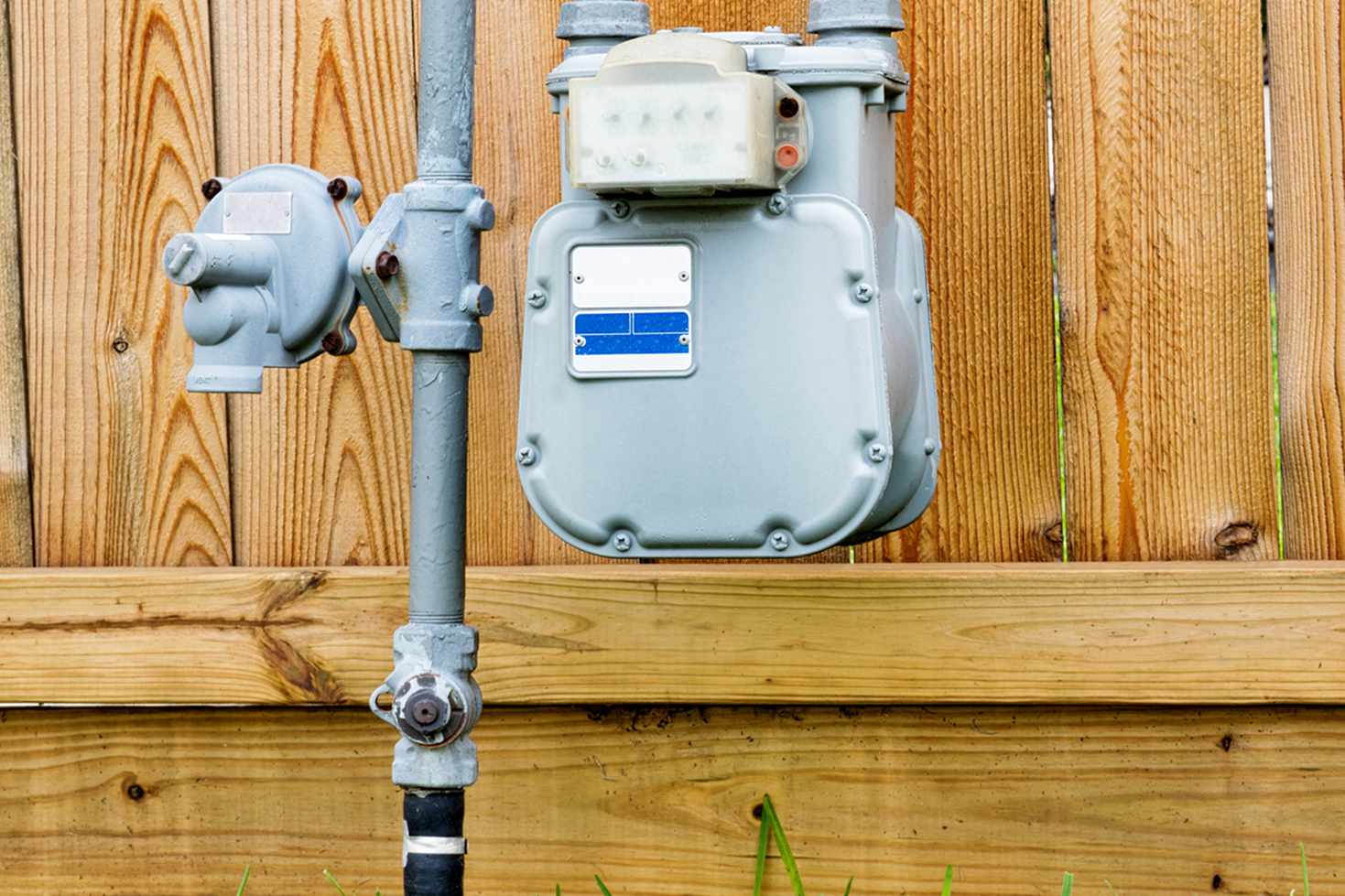 If you spot a water leak in your home, the first crucial step to take is switching off the main water supply. By doing this, you can prevent severe water damage that averages around $10,000 per insurance claim in the US.
If you spot a water leak in your home, the first crucial step to take is switching off the main water supply. By doing this, you can prevent severe water damage that averages around $10,000 per insurance claim in the US.
Your water meter has two shut-off valves – one on the street side and one on the house side. The first valve is managed by the city while you control the second one. Identify the valve on your house side – typically located in a box close to your home and accessed using a meter key.
Place your metallic meter key on the valve and turn it clockwise (right) to close it. Make sure to turn it lightly to avoid causing damage to the pipe.
| Steps | Description |
|---|---|
| Identify Valve | Located in a box near your home |
| Meter Key | Use a metallic tool to access valve |
| Turn Valve | Rotate clockwise to shut |
Once turned off, open any tap inside your household to get rid of any residue water left in your pipes. Now, you can safely investigate and fix the leak or call professionals without worrying about further damage.
Fixtures and Appliances Isolation
Understanding how to isolate fixtures and appliances is crucial in quickly dealing with water-related emergencies. Remember, a burst pipe can spill between 30 and 60 gallons (114 to 227 liters) of water per minute, making timely shut-off critical.
Locating Isolation Valves
Begin by identifying the isolation valves on your fixtures and appliances. These are usually small round or lever-shaped knobs located near the water supply line. Commonly, you’ll find them under sinks, behind toilets, or close to washing machines.
Turning Off Water Supply
To turn off the supply, rotate the valve clockwise until it’s tight. Be careful not to apply excessive force as this may cause damage. Once done, check if the water flow has stopped by turning on the fixture.
Cold Water Tank Isolation
If you need to isolate a cold water tank, look for a gate valve on or near it. This gate valve controls the flow of water from the tank. Close it by turning counter-clockwise.
Why Isolate Fixtures?
Isolation of individual fixtures allows you to carry out repairs without inconveniencing other household members by shutting off the entire house’s water supply.
No Valve? Consider Installing One
If there’s no isolation valve near a fixture or an appliance, consider having one installed by a plumber. This will allow you to promptly control a water leak in future situations without disrupting the rest of your home’s water system.
Water Heater Shut-off Mechanics
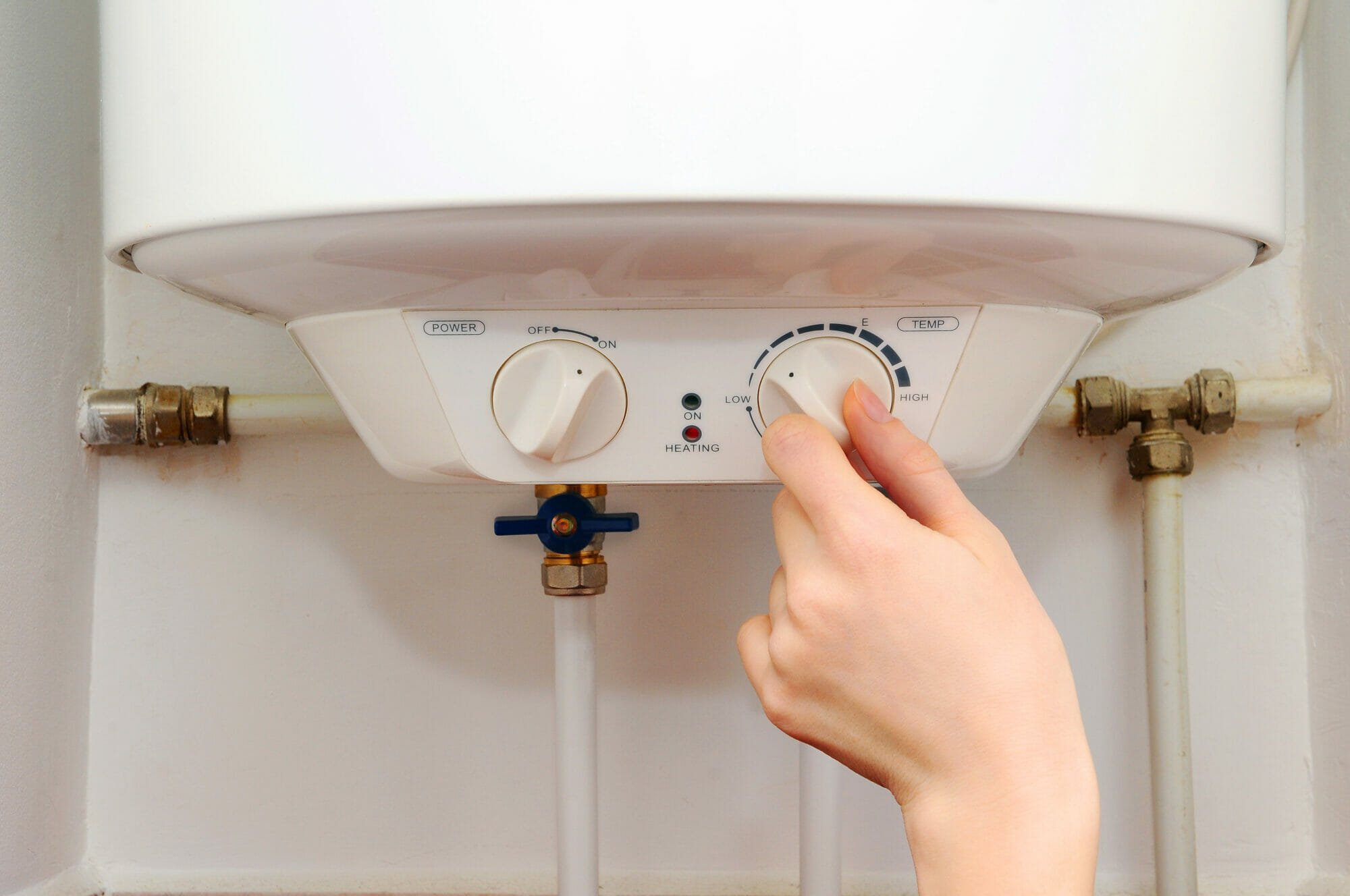 If you suspect a problem with your water heater, knowing how to safely turn off the water supply can prevent potential damage. Here’s how you can do it.
If you suspect a problem with your water heater, knowing how to safely turn off the water supply can prevent potential damage. Here’s how you can do it.
Firstly, locate the shut-off valve on your water heater. Usually, it’s situated at the top of the appliance.
- Ensure Safety: Make sure your water heater is cool before proceeding. Hot machines harbor risk of burns upon physical contact.
- Locate The Valve: This usually resembles a dial or lever. In many models, it’s positioned on a pipe running into the water heater.
- Turn Off Power: If your heater uses electricity, switch off the power from your panel or breaker box to prevent any electric shock hazard.
Now comes turning off the water supply. For this task, you should find a round wheel or lever-like formation which is typically bright in color for visibility purposes.
To shut it down, rotate this wheel clockwise until it refuses to turn further. Don’t excessively force its motion as doing so could possibly break it, causing complex issues.
Once turned off, check faucets to confirm if the water has stopped flowing. Congratulations! You’ve successfully shut off your water heater’s supply safely.
Safe Water Mains Shutdown
Shutting down your water mains can be crucial in emergencies to prevent additional damage. Homes with water leak detection systems could prevent 93% of water-related damages, underscoring the importance of knowing how to safely turn your water mains off.
The first step towards this entails locating your water mains; they are typically located in basements, garages, or on the home’s exterior. Next, identify the valve, usually lever or wheel-like.
- Clear Your Area: Ensure nothing obstructs your path to the valve or makes it difficult for you to access the area.
- Notify Household Members: Inform everyone in the house that you will be shutting off the mains, allowing them to plan accordingly.
- Turn Off The Valve: Turn the valve clockwise (for wheel-like valves) or perpendicular (for lever valves) until you cannot rotate it any further.
Your water supply is now shut down. If any faucets are running in your home, allow them to fully drain. This ensures that the entire water system is effectively shut off, reducing potential damage from leaks or pipe bursts.
In absence of an emergency, practice these steps once every few months. This not only familiarizes you with the process, but also checks if your valve is functioning correctly. Regular exercise prevents it from getting stuck due to rust or disuse.
Water Mains Shutdown
Safely switching off your water mains involves locating your shut-off valve, typically found near the water meter, and turning it off. For a step-by-step guide and detailed instructions, visit this site.



